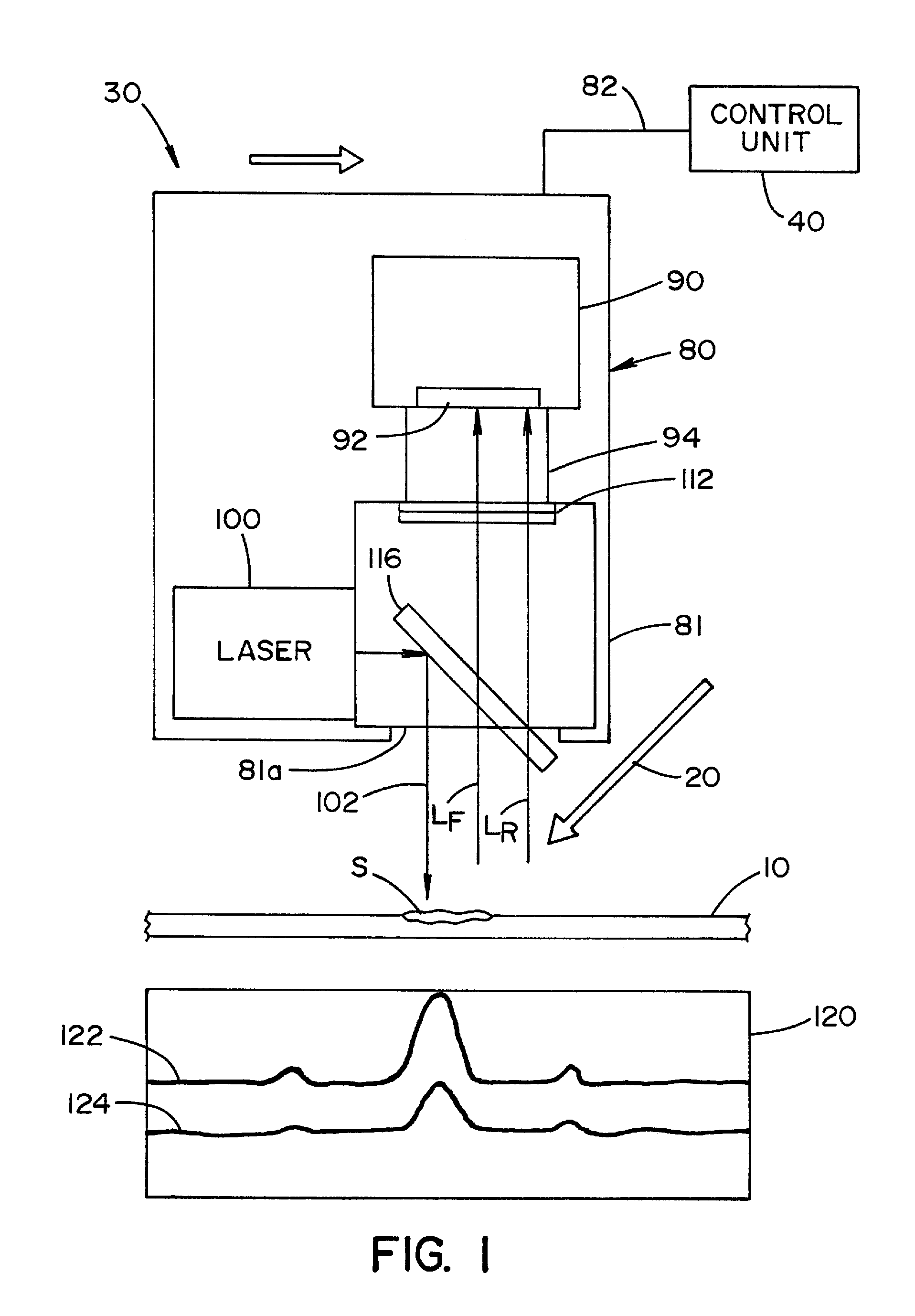Method for optical detection of bio-contaminants
a bio-contaminant and optical detection technology, applied in the field of cleaning and decontaminating arts, can solve the problems of difficult removal of bio-contaminants, time-consuming and costly human visual inspection, and difficulty in detecting minute amounts of soil by human visual inspection
- Summary
- Abstract
- Description
- Claims
- Application Information
AI Technical Summary
Benefits of technology
Problems solved by technology
Method used
Image
Examples
Embodiment Construction
[0022]It should be appreciated that the term “medical devices” as used herein, includes, but is not limited to, such articles as surgical, dental, veterinary and mortuary instruments and equipment. The articles may be made of various materials, including, but not limited to, stainless steel.
[0023]Referring now to FIGS. 1 and 3, there is shown a soil detection system 30 according to an embodiment of the present invention, generally comprised of a scanning unit 80 and a control unit 40. Scanning unit 80 includes a detector 90, a light source in the form of a laser 100 that produces a laser light 102, a light filter 112, and a dichroic beamsplitter 116 that are located within a housing 81. In the illustrated embodiment, scanning unit 80 is handheld by the user. It should be understood that the light source can alternatively be located external to scanning unit 80 and an optical fiber used to transmit light from the external light source to scanning unit 80.
[0024]In the illustrated embo...
PUM
| Property | Measurement | Unit |
|---|---|---|
| temperatures | aaaaa | aaaaa |
| wavelengths | aaaaa | aaaaa |
| wavelength range | aaaaa | aaaaa |
Abstract
Description
Claims
Application Information
 Login to View More
Login to View More - R&D
- Intellectual Property
- Life Sciences
- Materials
- Tech Scout
- Unparalleled Data Quality
- Higher Quality Content
- 60% Fewer Hallucinations
Browse by: Latest US Patents, China's latest patents, Technical Efficacy Thesaurus, Application Domain, Technology Topic, Popular Technical Reports.
© 2025 PatSnap. All rights reserved.Legal|Privacy policy|Modern Slavery Act Transparency Statement|Sitemap|About US| Contact US: help@patsnap.com



